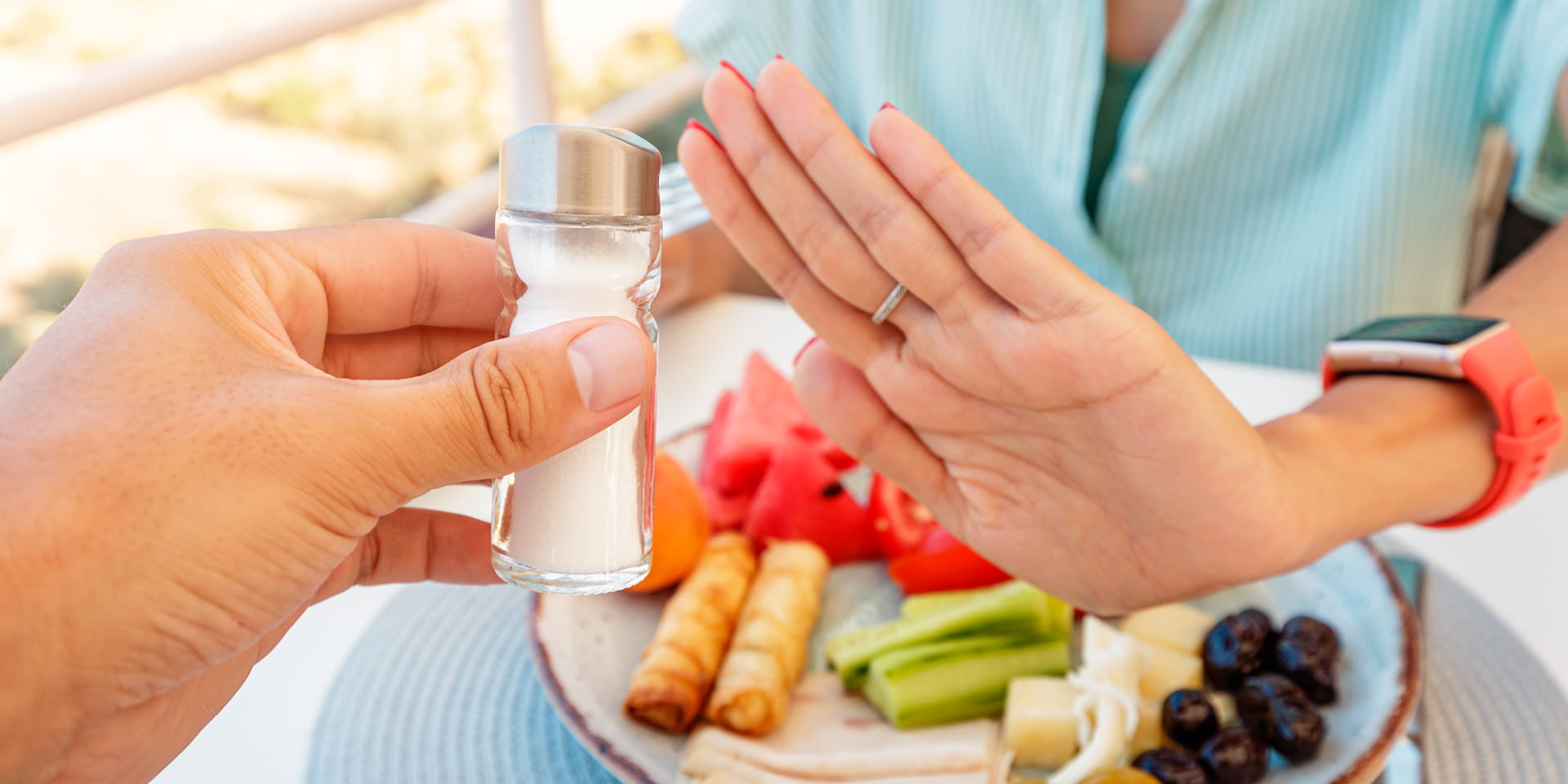We all need sodium to live, but too much salt in your diet can lead to heart problems, kidney disease, and even a stroke.
“About nine out of every 10 Americans take in more than the recommended daily amount of sodium, so it’s vital to talk about the importance of a lower sodium diet and how this dietary mineral affects the heart,” says Allisa Stocker, MSN, RN, the heart failure coordinator at Doylestown Health.
Awareness Is the First Step
“Heart failure occurs when your heart cannot keep up with its workload,” explains Allisa. People who experience heart failure often experience swelling in the lower extremities, weight gain, abdominal bloating, shortness of breath, and difficulty breathing with rest and exertion.
In addition to overseeing quality measures, Allisa counsels patients about how to live well with heart failure. “We offer advanced treatment options and follow evidence based guidelines to provide appropriate medical therapy including medications for your specific type of heart failure. Our providers provide a comprehensive approach including in-depth education on heart failure, risk factors and self-management,” says Allisa. “Heart healthy lifestyle changes are the key to feeling your best with or without heart failure, and taking charge of your sodium intake is vital — whether you’re living with heart failure or want to help reduce your risk of heart problems such as heart failure, high blood pressure, kidney disease, stroke, osteoporosis, and kidney stones.”
Salt in a shaker is a chemical compound, and sodium is a mineral that is part of that compound. While sodium occurs naturally in some foods, it is an additive in many processed foods. “Consuming excess sodium causes the body to retain more fluid, forcing the heart to work harder to pump this additional fluid around your body,” says Allisa.
What Is the Right Amount of Sodium?
“Ideally, we should consume less than 2,300 milligrams of sodium each day, per the American Heart Association (AHA) and U.S. Department of Agriculture Dietary Guidelines. That’s equal to about 1 teaspoon of salt,” says Allisa. “The AHA further suggests reducing daily intake to 1,500 milligrams or less for ideal heart health.”
How Much Are We Taking In?
Most Americans are overdoing it, taking in an average of 3,400 milligrams of dietary sodium a day, according to the AHA.
Simple Steps to Manage Sodium Intake
Read Nutrition Labels
“Packaged and restaurant foods account for about 70% of the sodium in the average American diet,” says Allisa. “Reading nutrition labels on packaged and prepared foods for the amount of sodium per serving is a great way to start off,” says Allisa. “It’s important to check portion sizes because we need to account for those extra portions of sodium as well.”
Consider Your Condiments
Condiments such as ketchup, mustard, mayonnaise, and salad dressing can have large amounts of sodium in a small serving. “Some salad dressings have 500 milligrams of sodium in just 2 tablespoons,” says Allisa, who recommends looking for products and condiments with reduced or lower-sodium versions, or to make your own dressing with the oil and vinegar/citrus juice of your choice.
Choose Veggies Wisely
Allisa suggests fresh or frozen vegetables, or canned vegetables with the “no salt added” label. Or drain and rinse canned beans and vegetables if you cannot find no salt added.
Taste Before Adding Sodium
Whether preparing food or sitting down to eat at home or in a restaurant, taste your food before adding sodium. You may not really need it.
Eating at a Restaurant
Ask to have no salt added to your food during preparation and avoid heavily sauced and seasoned food items. Choose a baked potato over mashed or scalloped options and pick steamed veggies over sauced. A good way to control portion size is to eat half and take half home for later.
Chain restaurants with 20 or more locations must provide nutrition information including sodium content, says Allisa. “For instance, by looking at the nutrition information while ordering a sausage, egg, and cheese sandwich, you may identify lower sodium options. The sandwich on an English muffin may have 850 milligrams of sodium but jump to 1091 milligrams for the same sandwich on a bagel.”
Learn More
If you would like to learn how to develop a Low Sodium Weekly Meal Plan, all are invited to sign up for our Heart Failure Support Group's upcoming meeting, 1 pm, August 24, 2022, in the Doylestown Health Ambulatory Center - Levy Conference Room, 593 West State Street, Doylestown, PA. To register, please call 215.345.2917 or email astocker2@dh.org.
About Doylestown Health's Heart & Vascular Services
Expert cardiologists and cardiac surgeons assist patients and physicians with managing risk factors for heart disease, offer advanced treatment options and provide outstanding emergency cardiac care. Doylestown Hospital’s accredited Chest Pain Center is fully prepared to treat cardiac emergencies around the clock, focusing on rapid diagnosis and effective treatment. The multidisciplinary team at the Woodall Center for Heart and Vascular Care is dedicated to providing the highest level of quality care and patient safety.


